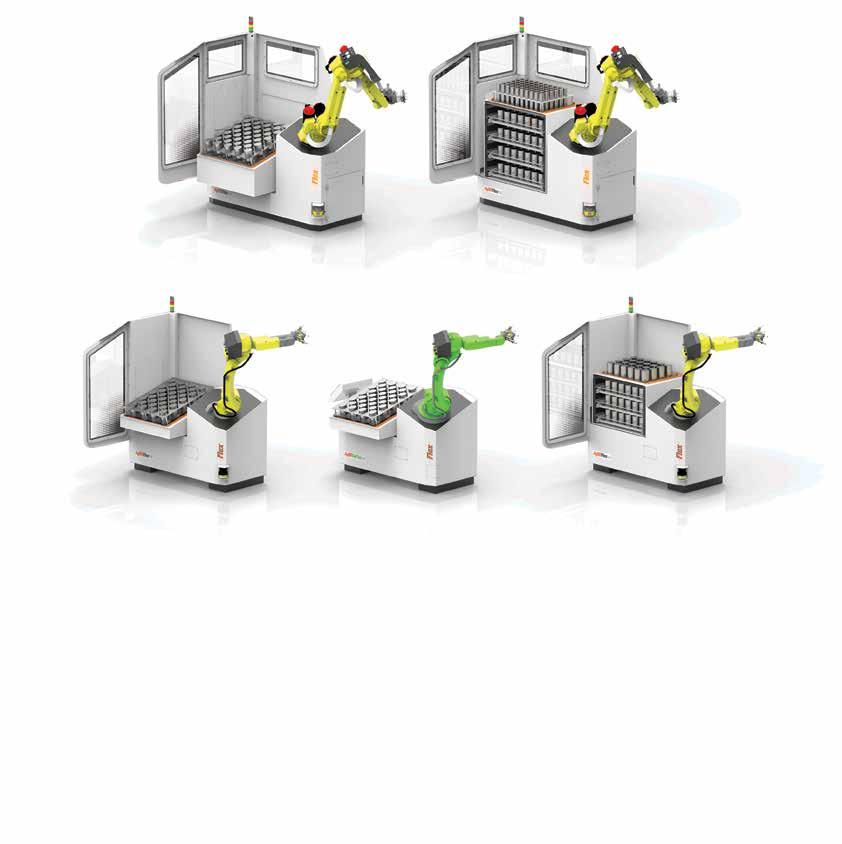
4 minute read
Can fabricated metals industry easily transition to onshoring?
from AMT AUG/SEPT 2020
by AMTIL
Can the fabricated metals industry easily transition back to onshoring? After decades of relying on steel produced overseas, recent events have driven Australian metal fabrication companies to seriously consider onshoring again. By Rob Stummer, CEO for Asia-Pacific at SYSPRO.
Why the change? It turns out that many manufacturers have learned a hard lesson regarding the negative side of offshoring over the last 30 years that do not occur when manufacturing remains onshore in Australia. Can the industry easily transition back to onshoring? First, let us look at why so many manufacturers moved metal fabrication outside of Australia in the 1980s and 1990s to places like China and Vietnam. Australia’s steel production according to Trading Economics, was at its peak in the late 1990s and today it has fallen to around 50% of that, with 400,000 tonnes produced in April 2020. The development of computer-based automation technologies, programmable logic controllers and cheap offshore labour are the rationale for so many to have moved their production offshore. As a result of offshoring, there have been countless issues over the past two or so decades with quality control, which is an extraordinary challenge when it is managed from 7,000km away. There have also been frustrations over production times and poor protection regarding the theft of intellectual property. Not least to say, there have been issues that are not easily controlled or predicted, including trade conflicts, strikes, wars, natural disasters and of course, global pandemics. Industries consuming steel How do the issues with offshoring affect Australian industries? Well, three of our key industries are the main consumers of steel fabricated products, including construction at 50%, manufacturing at 20% and mining at 17%, comprising almost 90% of total demand, according to a report by the Australian Department of Industry, Innovation and Science. The performance of the steel fabrication industry and of the diverse sectors within the industry are driven, in large part, by changes in demand from these industries. All three industries demand a wide variety of steel fabricated products for a diverse range of uses, but the largest consumer is the construction industry, with the manufacturing industry the second largest consumer. The industry is a major employer despite the trend towards offshoring, with Australia’s welding and fabrication industry responsible for the employment of over 78,900 people, 91% of whom are full-time employees, according the Australian Government’s Job Outlook site. Australia’s welding and fabrication industry has a total output capacity of over 1.6 million tonnes per annum. Steel is one of the most common, versatile and recyclable materials in the world. It is used in housing, transport, food and water supply, energy production and distribution, and healthcare. Steel builds the roads, railway lines, buildings and bridges, schools and hospitals – almost everything we use is either made of steel or manufactured by equipment made of steel. Who are our domestic steel producers? The Australian steel supply chain starts with either iron ore shipped from Western Australia and South Australia and is combined with coal and limestone to produce crude steel in the form of semi-finished products or recycled scrap steel. These semi-finished products are sent to product mills to be turned into finished products. There are two major crude steel producers in Australia: BlueScope Steel and Liberty Steel. A third producer, Moly-Cop, manufacturers speciality steel products mainly for the mining industry. BlueScope and Liberty Steel are vertically integrated, with subsidiary businesses operating through their supply chains. Liberty Steel has steel making and product mills in Whyalla, Laverton, Sydney and Newcastle, and

BlueScope’s steel making and product mills are in Port Kembla. Liberty Steel is looking to build a new steel plant in Whyalla capable of producing ten million tonnes a year, the largest in any developed nation. As well as the domestic crude steel producers, imports produced offshore are a significant source of steel product inputs that either compete directly with Australian producers or supplement their supply as our domestic companies do not produce all types of steel demanded by the Australian market today. But are three crude steel producers enough to support increased onshoring or is there an opportunity for another key player? Tightly managed supply chains Manufacturers of fabricated metal products know that success depends on tightly managing their complex supply chains, collaborating with customers to design the most effective products, while meeting quality, tolerance and material specifications. They also need to provide a full range of services from design to delivery and maintain flexibility to change capacity requirements while operating effective continuous replenishment systems. When these replenishment systems fail, it is usually due to the unpredictable issues associated with offshoring as we have seen with recent world events. To transition back to onshoring, the Australian metal fabrication industry needs to not only offer the types of steel demanded by the key industries here, but it also needs to manage production costs, product quality and on-time delivery to be more competitive against offshore producers. An ERP system will help them by automating and integrating business processes and improving management information, giving fabricated metal manufacturers a 360-degree picture of what is happening within their businesses. Given the 90% demand from our own industries, there is certainly an appetite to reconsider our onshoring strategy and investment into fabricated metals manufacturing and crude steel production. To reduce our over-reliance on imports, we need to support and invest in our steel industry. au.syspro.com












